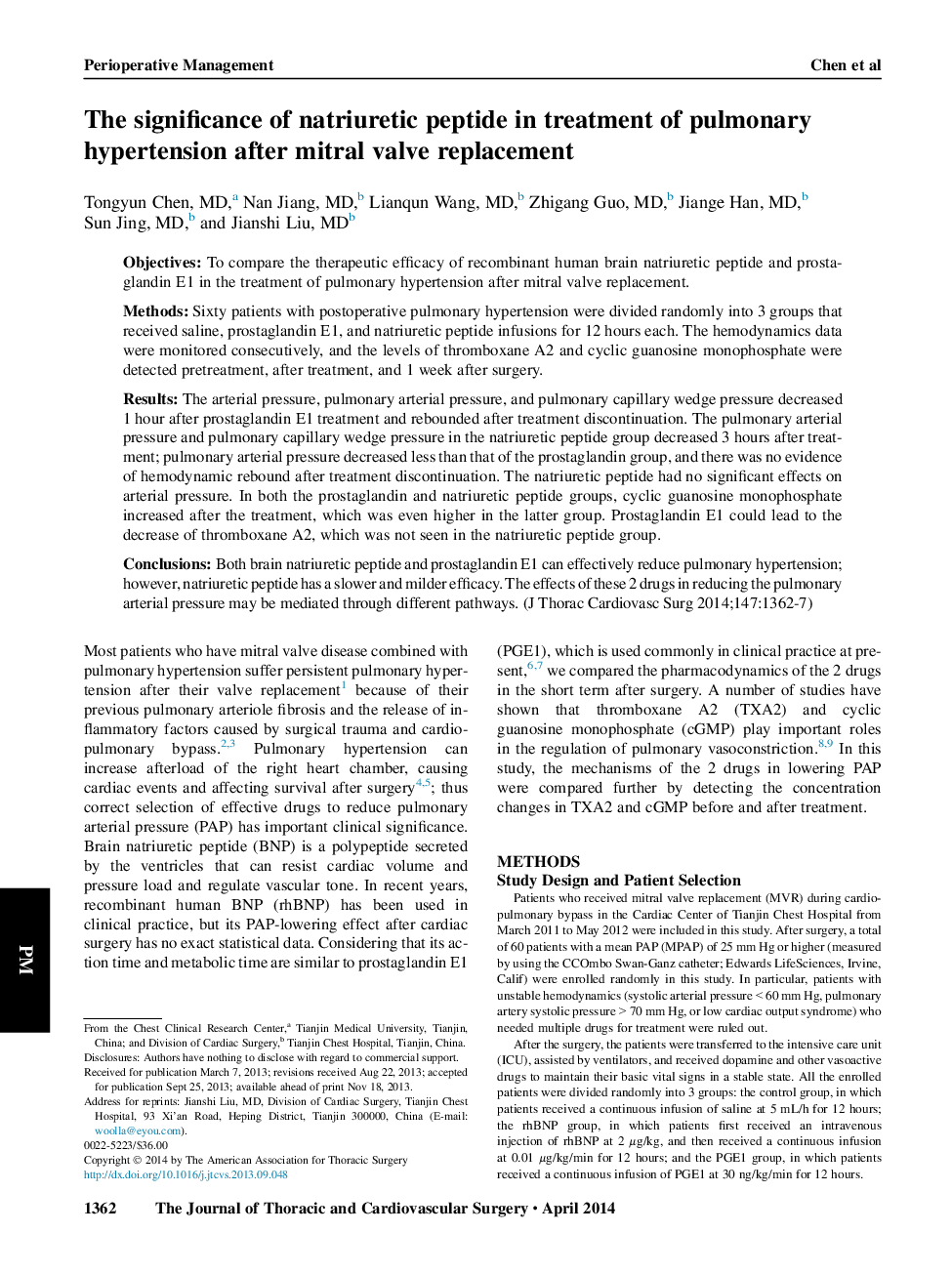| کد مقاله | کد نشریه | سال انتشار | مقاله انگلیسی | نسخه تمام متن |
|---|---|---|---|---|
| 2979753 | 1578612 | 2014 | 6 صفحه PDF | دانلود رایگان |

ObjectivesTo compare the therapeutic efficacy of recombinant human brain natriuretic peptide and prostaglandin E1 in the treatment of pulmonary hypertension after mitral valve replacement.MethodsSixty patients with postoperative pulmonary hypertension were divided randomly into 3 groups that received saline, prostaglandin E1, and natriuretic peptide infusions for 12 hours each. The hemodynamics data were monitored consecutively, and the levels of thromboxane A2 and cyclic guanosine monophosphate were detected pretreatment, after treatment, and 1 week after surgery.ResultsThe arterial pressure, pulmonary arterial pressure, and pulmonary capillary wedge pressure decreased 1 hour after prostaglandin E1 treatment and rebounded after treatment discontinuation. The pulmonary arterial pressure and pulmonary capillary wedge pressure in the natriuretic peptide group decreased 3 hours after treatment; pulmonary arterial pressure decreased less than that of the prostaglandin group, and there was no evidence of hemodynamic rebound after treatment discontinuation. The natriuretic peptide had no significant effects on arterial pressure. In both the prostaglandin and natriuretic peptide groups, cyclic guanosine monophosphate increased after the treatment, which was even higher in the latter group. Prostaglandin E1 could lead to the decrease of thromboxane A2, which was not seen in the natriuretic peptide group.ConclusionsBoth brain natriuretic peptide and prostaglandin E1 can effectively reduce pulmonary hypertension; however, natriuretic peptide has a slower and milder efficacy. The effects of these 2 drugs in reducing the pulmonary arterial pressure may be mediated through different pathways.
Journal: The Journal of Thoracic and Cardiovascular Surgery - Volume 147, Issue 4, April 2014, Pages 1362–1367